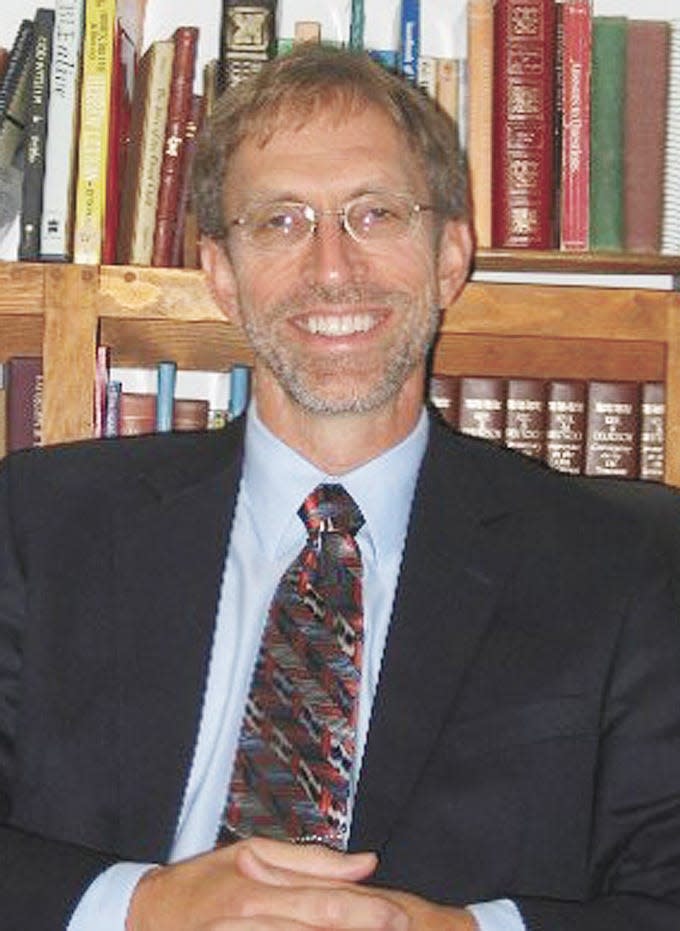Shayne Looper: Whether science or theology, the proof is in the pudding
- Oops!Something went wrong.Please try again later.
- Oops!Something went wrong.Please try again later.
- Oops!Something went wrong.Please try again later.
Albert Einstein and Niels Bohr, two of the greatest minds of the 20th century, engaged in a decades-long disagreement over the nature of physical reality, and particularly over quantum mechanics. Einstein rejected Bohr’s idea of quantum entanglement as “spooky action at a distance.”
Quantum entanglement is hard for us to understand or even talk intelligently about. The idea is that the state of one particle in an entangled pair — an electron, for example — continues to correlate with the other particle even after the physical connection between them has been severed.
Physicists still debate the cause of this strange connection, but recent technological advances have proved that it exists. Change the “spin” of an electron that is part of an entangled pair, and the spin of its partner is modified, regardless of the distance between the two particles.

The debate that Einstein and Bohr began still continues. Whenever I read about it, I cannot help but think about a different kind of “entanglement”: that of Jesus and his people. We find evidence of this mysterious connection in the Gospels, in Acts, and in the Epistles.
The idea of a bond between Jesus and his people goes back to Jesus’s own words. A well-known example comes from teaching Jesus gave shortly before his crucifixion. Regarding future judgment, Jesus said “the king” would separate individuals into two groups, one blessed and the other cursed.
The king tells the blessed that they fed him when he was hungry, clothed him when he was naked, and visited him when he was sick. He tells the cursed that they ignored him when he was hungry, naked, and sick. People in both groups claim that they never saw the king hungry, naked, or sick, so how could they have done, or failed to do, these things for him?
Jesus’s answer was, “Whatever you have done” — or not done — “for the least of these brothers and sisters of mine, you have done” — or not done — “for me.” Apparently, Jesus and his people are “entangled.”
This receives further confirmation from an event in St. Paul’s life. He had violently persecuted Jesus’s followers and was on his way to arrest and imprison even more of them. That is when Jesus appeared to Paul and demanded to know why he was persecuting him. Even though Jesus was in heaven, Paul’s violence against his people was equivalent to persecuting Jesus himself.
The Apostle Paul takes this much further. He claims that Christ’s death affected his people’s death too. When he rose from the dead, his people also rose. When he appears in the last days, “we also will appear with him.” Paul sees an inviolable connection between Jesus and his people.
This means for Paul, as it meant for Jesus, that doing something for or to a Christ-follower has a corresponding effect on Jesus himself. So, in his first letter to the Church at Corinth, he argues that “when you sin against your brothers and sisters … you sin against Christ.” This claim echoes Jesus’s own words, “Whatever you have done for the least of these brothers and sisters of mine, you have done for me.”
Paul parses this out in his theological teaching. “… We are convinced that one died for all, and therefore all died.” It was with this idea of connection in mind that Paul wrote, “the result of one act of righteousness was justification that brings life for all men,” and “through the obedience of the one man the many will be made righteous.”
Theologians are as divided about how this connection works as physicists are divided over the principles that govern quantum entanglement. What the world needs is experimental proof. Technology has provided such proof when it comes to quantum entanglement; Christians need to do the same thing when it comes to demonstrating the Christ connection.
Conviction of the reality of quantum entanglement did not come from Niels Bohr’s arguments but from John Bell’s experiments, and later by those performed by the 2022 Nobel Laureates. The proof was in the quantum pudding. Likewise, the reality of the Christ connection will be proved by people who live the life rather than just talk about it.
— Shayne Looper is a writer and speaker based in Coldwater, Michigan. Contact him at salooper57@gmail.com.
This article originally appeared on The Holland Sentinel: Shayne Looper: Whether science or theology, the proof is in the pudding

